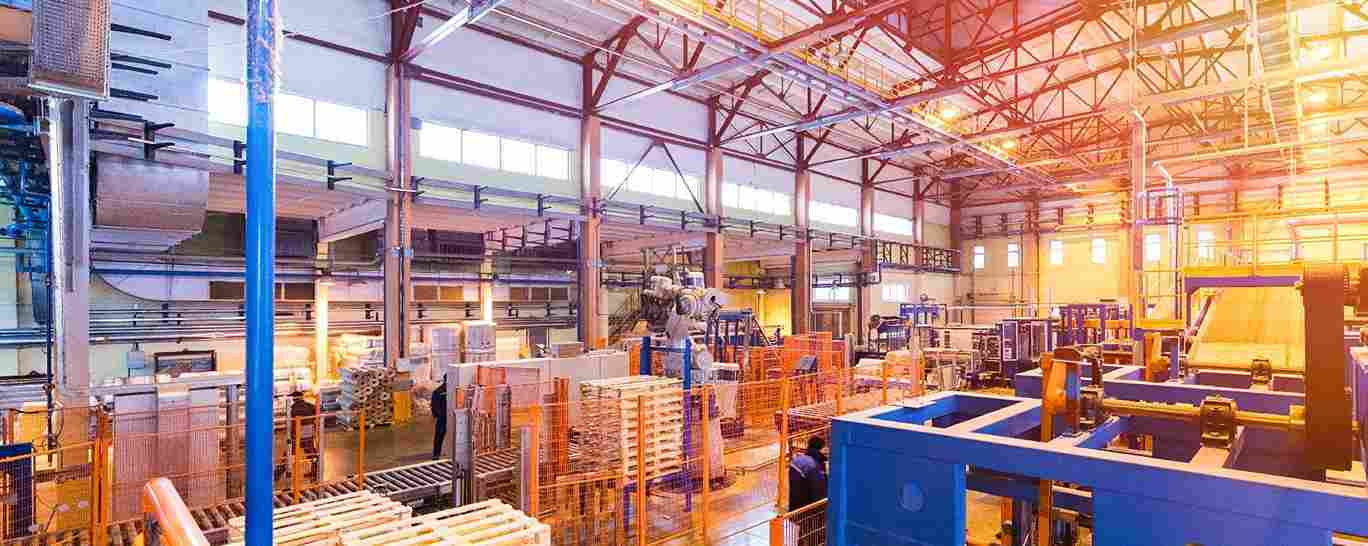
What is Maintenance Management Software?
Maintenance Connection is a leading maintenance management CMMS software that helps businesses maximize operational efficiency.
Solutions
Workplace Management Solutions
Real Estate Management Solutions
Maintenance Management Solutions
Energy Management Solutions
Engineering Document Management Solutions
Asset Management Solutions
Automate campus scheduling for classes, meetings, and exams with our EMS software.
Plan and manage conferences effortlessly with EMS software to impress guests and streamline operations.
Boost workplace flexibility and maximize space use with seamless desk and room booking.
Organize workplace or campus events smoothly, creating memorable experiences.
Optimize workspace, manage allocations efficiently, and reduce costs with our space management solutions.
Deliver projects on time and within budget by improving communication, collaboration, and efficiency with our software.
Streamline lease accounting for ASC 842, IFRS, and GASB compliance.
Manage leases efficiently by tracking key dates, analyzing costs, and ensuring compliance.
Centralize data and analytics for better insights, faster negotiations, and revenue growth.
Centralize facility and asset maintenance, automate work orders, and ensure compliance with our CMMS software.
Extend asset life, reduce downtime, and prevent costly repairs with data-driven monitoring.
Prevent equipment failures and extend asset life by detecting and addressing issues early.
Make sustainable, cost-efficient energy decisions by monitoring and optimizing power consumption.
Remotely monitor and control equipment with real-time data to predict issues, boost efficiency, and reduce downtime.
Easily share and collaborate on documents, creating a single source of truth for engineers and contractors.
Manage and analyze assets across their lifecycle to schedule maintenance, reduce downtime, and extend lifespan.
Improve visibility, automate work orders, and ensure compliance for efficient facility and asset management.
Resources
Browse our full library of resources all in one place, including webinars, whitepapers, podcast episodes, and more.
Support
Looking for access to technical support, best practices, helpful videos, or training tools? You’ve come to the right place.
About Accruent
Get the latest information on Accruent, our solutions, events, and the company at large.

Explore the top benefits of implementing Computerized Maintenance Management Systems (CMMS) in manufacturing. Learn how CMMS can streamline your maintenance operations, boost productivity, and lead to significant cost savings.
According to Forbes, effective predictive management can capture and prevent up to 82% of typical asset failures. This insight underlines the significant role that a CMMS play in contemporary maintenance strategies. By leveraging automation and data analytics, the software anticipates and mitigates potential failures while fostering a more proactive and efficient maintenance environment. The benefits of CMMS can have a transformative impact on an organization’s maintenance management.
The right choice of technology can be a significant change for modern business. By utilizing a CMMS, maintenance management is propelled into a new era of efficiency and effectiveness. Here are 10 benefits of a CMMS system.
A CMMS slashes operational costs in a few different ways by pinpointing exactly where savings can occur. It cuts equipment downtime by scheduling maintenance before breakdowns happen. That means saving on emergency repair costs. It tracks parts in real-time for inventory, alerting when to reorder while preventing expensive rush orders or excess stock. Resource allocation gets smarter, too – automatically matching tasks with available technicians. The targeted actions shave off unnecessary expenses and make a CMMS a choice that leads to direct savings.
Stop any issues before they happen. By automating the scheduling of routine maintenance, a CMMS ensures that no tasks fall through the cracks. This foresight helps prevent unexpected breakdowns, saving on costly emergency repairs. The preventative maintenance software encourages and fosters a culture of keeping an eye on equipment safety and reliability. Prioritizing preventative maintenance over reactive maintenance helps extend the life of equipment while maintaining optimal conditions.
.svg)
Automation technologies are increasingly used in the manufacturing industry to boost productivity, achieve consistent quality, reduce costs, and allow human workers to pursue more creative and higher-skilled work.”
— MIT Science Policy Review
Are bottlenecks getting in the way of overall efficiency? The right CMMS streamlines workflows by setting a direct path from issue identification to resolution. It enables real-time monitoring and reporting while offering instant insights into maintenance activities and performance metrics. This level of oversight helps with regulatory compliance by ensuring that all procedures meet the latest standards. With the right CMMS software, companies see a boost in overall operational efficiency. It turns maintenance from a reactive task into a proactive, strategic asset.

There might not be anything more important than safety and compliance. With a CMMS, companies ensure equipment consistently meets standards. It adeptly tracks and manages regulatory requirements, keeping all maintenance activities aligned with current laws and guidelines. The system maintains a safe work environment by promptly flagging potential safety issues and scheduling corrective maintenance. Automating these checks both protects employees and helps avoid costly compliance penalties.
Analytics provide actionable insights regularly. With a CMMS, leaders receive detailed insights into each asset’s performance, efficiency, and uptime. The maintenance management software identifies opportunities to optimize the asset lifecycle which leads to extended equipment longevity while enhancing the value of an investment. This wealth of information also sharpens decision-making, guiding managers on resource allocation and future investment decisions. Data is turned into actionable intelligence, fostering a more strategic approach to asset management.
Beyond asset analysis, a CMMS provides access to comprehensive reports and performance metrics. This wealth of data shows maintenance trends and pinpoints areas primed for improvement. Armed with accurate data, managers can inform strategic planning, optimizing processes and resources for better outcomes. It is a data-driven framework built to ensure decisions are not based on gut feelings but solid evidence. This approach significantly increases the likelihood of success in maintenance strategies.
.svg) It has been said that failure is a foundation of innovation. Companies that are prepared for faster iterative learning — fail fast, learn faster — will gain insight and knowledge before their competitors.”— Harvard Business Review
It has been said that failure is a foundation of innovation. Companies that are prepared for faster iterative learning — fail fast, learn faster — will gain insight and knowledge before their competitors.”— Harvard Business Review
Simplicity is the cornerstone of success. With a CMMS, organizations simplify the creation, tracking, and completion of work orders. That streamlines the maintenance process from start to finish. The work order software fosters improved communication and accountability among maintenance staff. It ensures that everyone is on the same page and responsibilities are clear. With detailed histories for each work order, resolving maintenance issues becomes quicker and more efficient. The comprehensive approach speeds up the maintenance process while enhancing the quality of work. It is about creating a more effective maintenance team overall.

Unlock a new level of employee productivity. A CMMS streamlines work processes and significantly minimizes downtime while maximizing productive hours. It refines task prioritization and scheduling, which means the most important tasks are addressed promptly. Employees gain access to real-time data, which empowers them to make informed decisions quickly and effectively. The access speeds up response times while boosting overall productivity. The staff can operate more effectively, directly contributing to the organization’s bottom line.
Get things done as they need to be done. CMMS software utilizes an efficient work order management system that provides quick access to equipment manuals and instructions. This means maintenance teams have all the necessary information at their fingertips. The tool improves coordination among teams through a streamlined avenue of communication and collaboration. By efficiently managing work orders and facilitating better teamwork, a CMMS ensures tasks are started and completed on time. It is a boost to the overall effectiveness of maintenance operations.
Focus on the most important tasks at hand. With a CMMS, urgent repairs and inspections get prioritized. This helps mitigate downtime while ensuring a faster turnaround on necessary maintenance activities. It is an effective tool for addressing issues swiftly without compromising on the quality of work. Due to this rapid response, operations continue to run smoothly while reducing the potential impact of equipment failures on productivity.
Accruent’s Maintenance Connection is a leading CMMS designed to revolutionize how organizations manage and optimize their maintenance operations. It combines a comprehensive suite of tools tailored to improve every aspect of maintenance management. This includes everything from work order management to preventative maintenance scheduling, asset management, and reporting capabilities.

The key features of Maintenance Connection include the following:
The platform’s advanced reporting capabilities allow for the tracking of important KPIs. This means that stakeholders are provided with the information they need to make tough, strategic decisions. It is about building towards more efficient operations from the ground up – based on data, not just instincts.

Accruent’s Maintenance Connection delivers unparalleled efficiency, superior asset management, and insightful data-driven decisions. Organizations seeking a truly transformative approach to maintenance can discover its impact firsthand.
Want to know how? Request a demo or contact the sales team for more information. The future of maintenance management begins with Accruent.
Utilizing a CMMS taps into several benefits. The software enhances operational efficiency, reduces costs through preventative maintenance, improves asset lifespans, and ensures compliance with safety standards. Most importantly, the maintenance software provides real-time data for better decision-making, which leads to an overall improvement in productivity.
The primary purpose of a CMMS system is to centralize maintenance information. The goal is to automate maintenance processes and optimize the use and maintenance of assets. It provides information for timely maintenance tasks that reduce equipment downtime that, in turn, extends asset life. Implementing the right CMMS system can be transformative for an organization’s operations and bottom line.
The value of a CMMS system lies in its ability to save time and resources by optimizing each step of maintenance operations. Through effective asset utilization and data analytics, it provides actionable insights into maintenance performance. The software supports strategic maintenance planning and execution – and that contributes to longer asset life cycles which reduce operational costs.
Modern maintenance systems – like a CMMS – offers several benefits. The automation of tasks and data management leads to improved reliability and safety of assets. This leads to significant cost savings and the ability to predict and prevent failures before they occur. The best CMMS fosters a proactive maintenance culture that leverages technology to drive overall organizational excellence.
Maintenance Connection is a leading maintenance management CMMS software that helps businesses maximize operational efficiency.
A CMMS or computerized maintenance management system is software that helps plan, monitor, & report maintenance tasks, track work orders & ...
Explore key factors to find the best CMMS software for manufacturing and elevate your facility's maintenance efficiency and productivity to the next ...
Subscribe to stay up to date with our latest news, resources and best practices